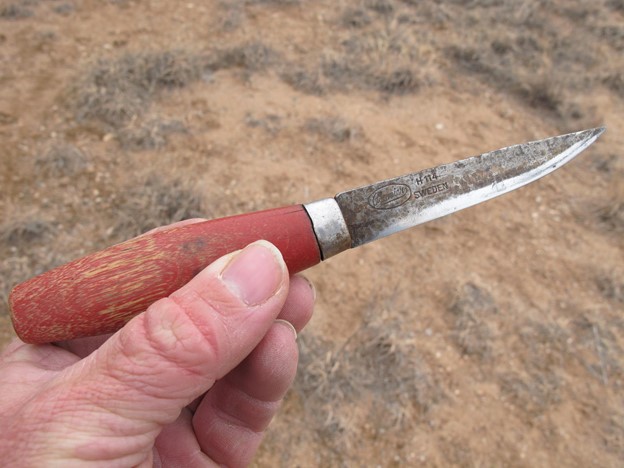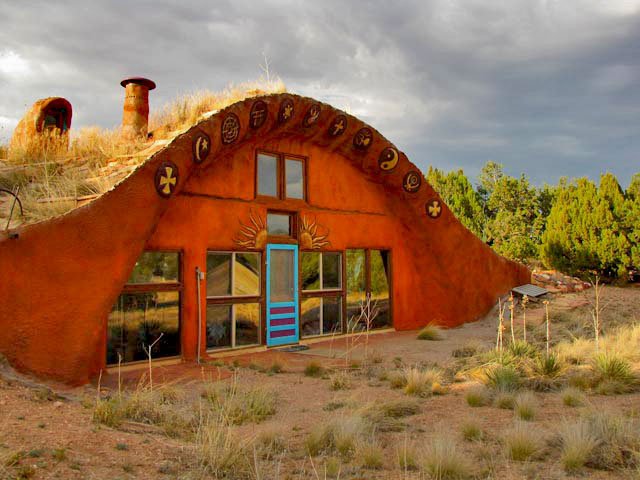A few months ago, I wrote a couple of articles about Mors Koshanki, who I believe introduced and popularized the Mora knife in the bushcraft, survival, and outdoor living skills scene, especially in North America. Can be found here https://oldmora.blogspot.com/2021/12/Morskochanski.html and and https://morakniv.se/en/morakniv-stories-en/in-memory-of-mors-kochanski-1940-2019/
However, Cody Lundin is another person who brought the Morakniv to the spotlight. Most people know Cody from his appearances on survival shows on TV, such as "Dual Survival" and "The Today Show". However, it was on "Dual Survival" that many people saw a Mora knife for the first time.
There are three things that I always associate with Cody: his hair strands, bare feet, and of course, the red-handled Mora knife around his neck. But his journey started many years before. Cody Lundin was born in late 1960s, in Prescott, Arizona, USA. His surname Lundin has his origin in his Swedish ancestry.
Cody's love of all things self-reliant began as a child with the influence of his homesteading grandparents. Their rural South Dakota lifestyle, characterized by living close to the land and embracing a "do more with less" mentality, instilled in Cody the values of self-sufficiency and the pioneer spirit.
Being the only child in a military family, Cody's upbringing involved frequent relocations, including time spent in Europe. Amidst the constant changes and lack of a permanent home, Nature became Cody's steadfast companion. Whether exploring the nearby woods or simply spending time in the backyard, he developed a deep connection with the natural world.
During his teenage years in the prairies and mountains of Wyoming, Cody's interest in self-reliance training continued to grow. He often ventured alone into the Wyoming wilderness with minimal gear, armed with only a piece of fishing line to improvise and catch brook trout. Displaying determination and resourcefulness, Cody graduated from high school ahead of schedule and created his first survival kit for a life on the road. With a duffle bag and a guitar in hand, he boarded a westward bound greyhound bus, embarking on a journey that would test his mettle and nearly cost him his life. He lived on city streets, sought solace in the solitude of the woods, and even became a part of a radical commune near the Mexican border. These formative years, which Cody refers to as "warrior training," immersed him in challenging environments, pushing him to confront the depths of his capabilities.
Cody's life took a transformative turn when he experienced a profound connection with the red rock wilderness of Arizona. It was within the breathtaking beauty and solitude of this landscape that he had a profound spiritual awakening, forever altering his perspective. Inspired by this experience, Cody made a conscious decision to change his life's direction and dedicate himself to sharing the wonders of Nature with others. This pivotal moment marked the beginning of a multi-year journey characterized by difficult choices, self-imposed deprivation, and continuous self-correction.
He developed an interest in primitive living and survival skills at a young age and had some of his first teachers, including Mors Koshanki, Dave Wescott & Boulder Outdoor Survival School (BOSS) etc in the early 1990s.After completing a 14-day BOSS field course, he joined the school’s instructor staff.
Cody Lundin's commitment to sharing his expertise with others led him to establish the Aboriginal Living Skills School (ALSS) in 1991. Located in Prescott, Arizona, ALSS serves as a hub for wilderness education and survival training. Lundin's school offers a wide range of courses, ranging from basic survival skills to in-depth training in primitive living, fire-making, shelter construction, edible plant identification, and emergency preparedness. Through ALSS, Lundin has empowered countless individuals to reconnect with nature and develop self-reliance.
Cody's knives came from Mors, and they were the classic N.1 branded Premier. Premier was a private label made by KJ Eriksson for the North American market. There were several different models made with the Premier brand. His main knife, which he calls "honey," is a Mora knife. Cody also has a few other knives. According to him, he established a friendship with a Swedish woman who was a sales representative for EUA. She allowed him to go through her stock of old knives, and one of these knives is a 1154 series.
His idea of a bushcraft knife is very in line with that Mors would say, , fixe bladed knife, blade 4 fingers length, handle the size of your palm, carbon steel and a wide bevel.
In a Facebook post Cody talks about this personal choice
"Hi campers, I've had many questions about, "what knife do you use". Hopefully this post will set the record straight. The photo is of "honey", the nickname for my knife, as many Scandinavian peoples named their cutting edges in Viking times.
I have used this same knife since i got her in 1990 or 1991. In other words, i have had this very knife in the field to teach thousands of students for more than 20 years. It literally built my business. Nothing fancy, simple, laughed at by the uneducated. Its a Premiere brand knife, one of the old foundries in Sweden that went out of business some 30 years ago. You can see the wear on the blade from hundreds of sharpenings.
To be clear, Mora is a town in Sweden that used to have several foundries that made knives; Premiere, KJ Eriksson, Frosts, and now Mora of Sweden. When someone says I carry a "mora knife" its true that the foundry used to be there, along with all of the others, but as I have said, my knife hasn't been made for many years. Knives are touchy subjects for so called survival instructors, whose main mentality seems to be the bigger the better. They are phallic shaped for a reason folks. My boiler plate advise on choosing a good knife.....? whatever you feel most comfortable whittling with. Beware of all the bullshit and stay sharp!"
Cody prefers carbon steel over stainless because where he lives, he doesn't require the extra rust protection of the stainless, and it's easier to sharpen and maintain in the field. He likes to use a simple wood board with sandpaper 400 and 600 on each side, to sharpen his knives. He picked up this system from Mors, which you can see in the Bushcraft book. Another factor in favor of carbon, is the ability of using a piece of flint to strike the back of the knife to get a spark.
 Photo credit Christopher Marchetti
Photo credit Christopher Marchetti
In the book "98.6 Degrees: The Art of Keeping Your Ass Alive," there is an interesting picture of the modifications Cody made to the sheath so he could carry a mini survival kit with him all the time. He wrapped some bright color electrical tape around the plastic sheath and added a lighter and a condom (to be used as a water container) on top of the duct tape. Both items were wrapped with bright yellow electrician's tape. In his own words, "with this kit, I can build a town and thrive." A paracord lanyard, a whistle and a small led flashlight complete the kit. In Cody own word, "With this little setup, you put me in the right area with tool, and I will build you a village"
Cody Lundin is not only a survival expert but also an author with several edited books, including:
- 98.6 Degrees: The Art of Keeping Your Ass Alive (2003) https://amzn.to/3pgkoCC
- This book, serves as an excellent source of information on his survival techniques and philosophy. It offers practical advice and insights into the art of wilderness survival.
- When All Hell Breaks Loose: Stuff You Need to Survive When Disaster Strikes (2006) https://amzn.to/42WAyip
- this work focuses on emergency preparedness and survival strategies during catastrophic events. It provides valuable insights into Lundin's approach to self-reliance and disaster preparedness.
Cody Lundin's survival philosophy revolves around sustainable living and environmental responsibility. He emphasizes the importance of preserving natural resources, practicing Leave No Trace principles, and adopting eco-friendly approaches to survival. Lundin's advocacy for environmental stewardship has inspired countless individuals to respect and protect the natural world.
Cody social media
- https://www.codylundin.com/
- https://www.facebook.com/profile.php?id=100043895751189
- https://www.youtube.com/user/abodudeman
- https://www.instagram.com/codylundinsurvival/?hl=en
Sources
- https://www.codylundin.com/
- https://www.codylundin.com/Cody%20Lundin%20Press%20Kit.pdf
- https://www.facebook.com/124508247561387/photos/a.180034708675407/359732390705637/?type=3&theater
- https://www.backpacker.com/survival/the-wisdom-of-abo-dude




.jpg)

Great article on an interesting and inspirational person.
ReplyDeleteThanks
Delete